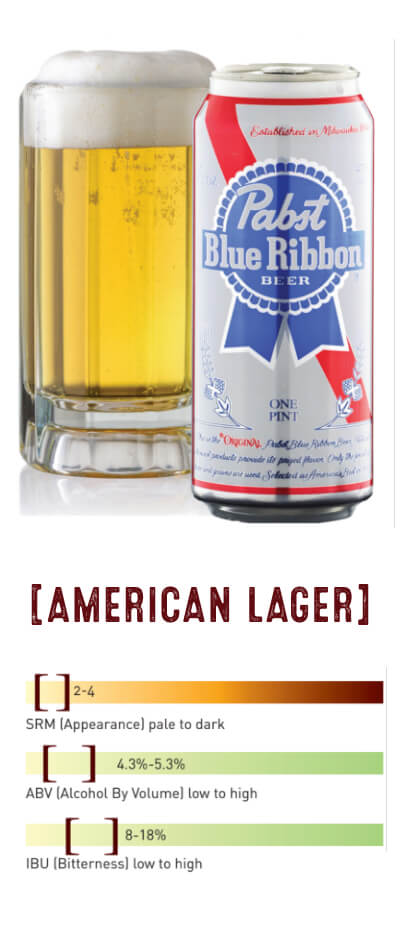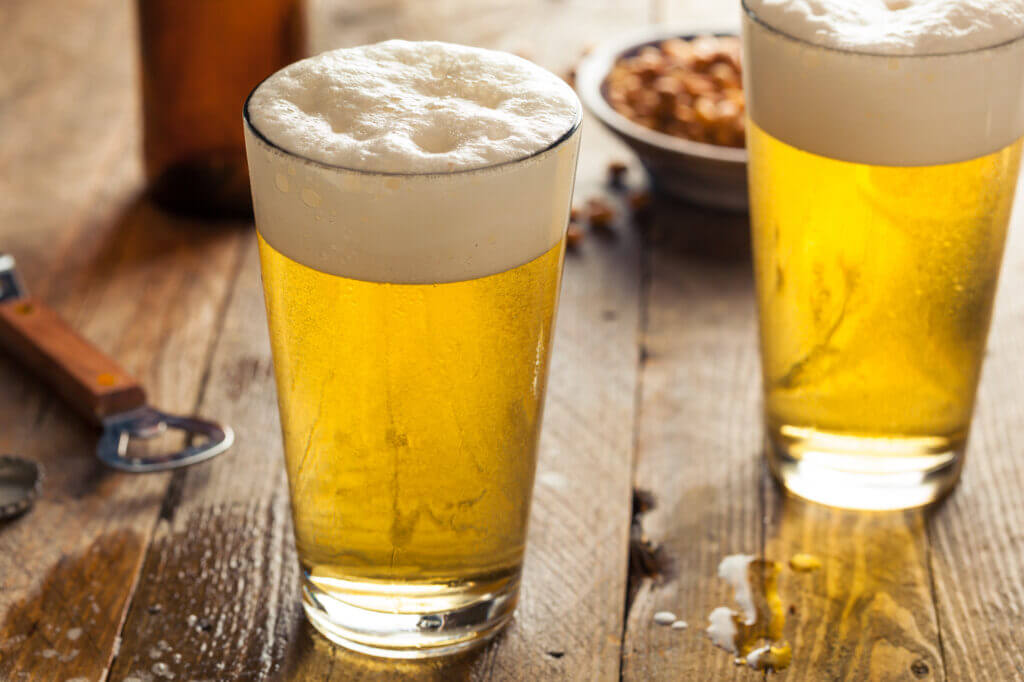
Origin: Europe, to USA via Germany mid-1800’s
History: Although German immigrants had brewed traditional Pilsner-inspired lager beer in the United States since the mid-late 1800s, the modern American lager style was heavily influenced by Prohibition and World War II. Surviving breweries consolidated, expanded distribution, and heavily promoted a beer style that was appealing to a broad range of the population. Became the dominant beer style for many decades and spawned many international rivals who would develop similarly bland products for the mass market supported by heavy advertising.
Appearance: Very pale straw to medium yellow color. White, frothy head seldom persists. Noticeably clear.
Aroma: Low to no malt aroma, although it can be perceived as grainy, sweet, or corn-like if present. Hop aroma may range from none to a light, spicy or floral hop presence. While a clean fermentation character is desirable, a light amount of yeast character (particularly a light apple character) is not a fault. Light DMS is also not a fault.
Flavor Profile: Relatively neutral palate with a crisp and dry finish and a moderately-low to low grainy or corn-like flavor that might be perceived as sweetness due to the low bitterness. Hop flavor ranges from none to moderately-low levels, and can have a floral, spicy, or herbal quality (although often not strong enough to distinguish). Hop bitterness at low to medium-low level. Balance may vary from slightly malty to slightly bitter but is relatively close to even. High levels of carbonation may accentuate the crispness of the dry finish. Clean lager fermentation character.
Bitterness: 8-18 IBU’s
Commercial Examples: Budweiser, Coors Original, Miller High Life, Pabst Blue Ribbon, Utica Club, Luchesa Lager
Recommended Food Pairings: Lighter cheeses like Gouda or mozzarella, Pizza, Fried Food & Meat: The American Lager has a crisp, clean taste that cuts through fatty and fried foods.

